Asia boasts the 10 highest mountains in the world, the majority of which are located in the snow-capped Himalayas. Inspiring as these summits might be, they’re only scalable by experienced mountain climbers. If you’re an experienced trekker, you’ll be looking for more beginner-friendly mountains to climb, which nonetheless push you out of your comfort zone and enable you to develop your skills.
We’ve got you covered with this list of the best mountain hikes in Asia, which we've selected with help from mountain guides from around the world. Although we have included several trekkable peaks in the Himalayas, we also wanted to showcase the diversity that the continent has to offer. This includes active volcanoes in Indonesia, and Umm Ad Dami - the highest mountain in Jordan - located in the heart of the desert.
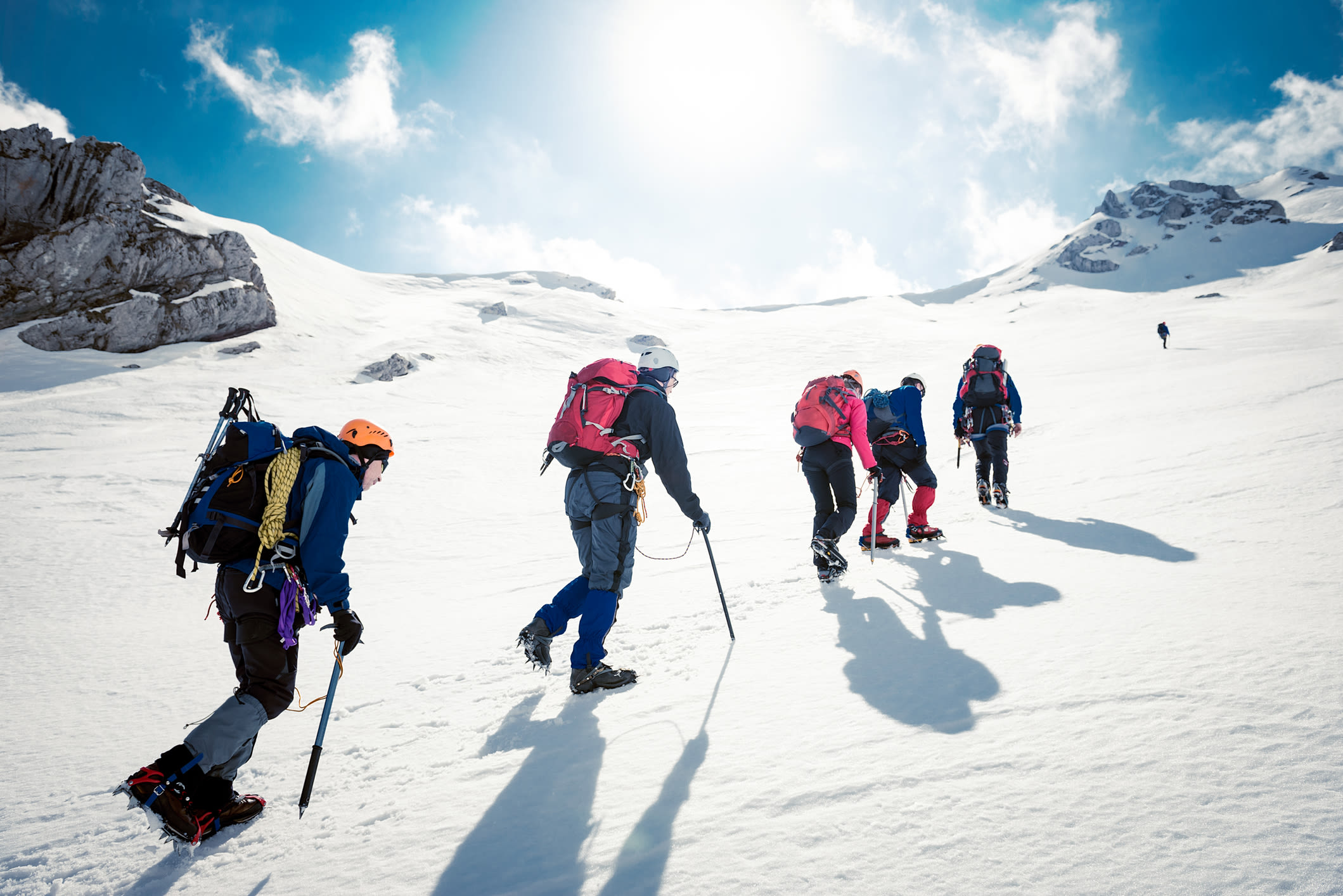
It’s important to note that these route descriptions are only short summaries, designed to inspire but not to serve any navigational purpose. They are not intended to guide you on the route and further mapping and planning (or a local guide!) will be required if you want to safely walk any of the trails featured.
1. Yala Peak (5,500m), Nepal
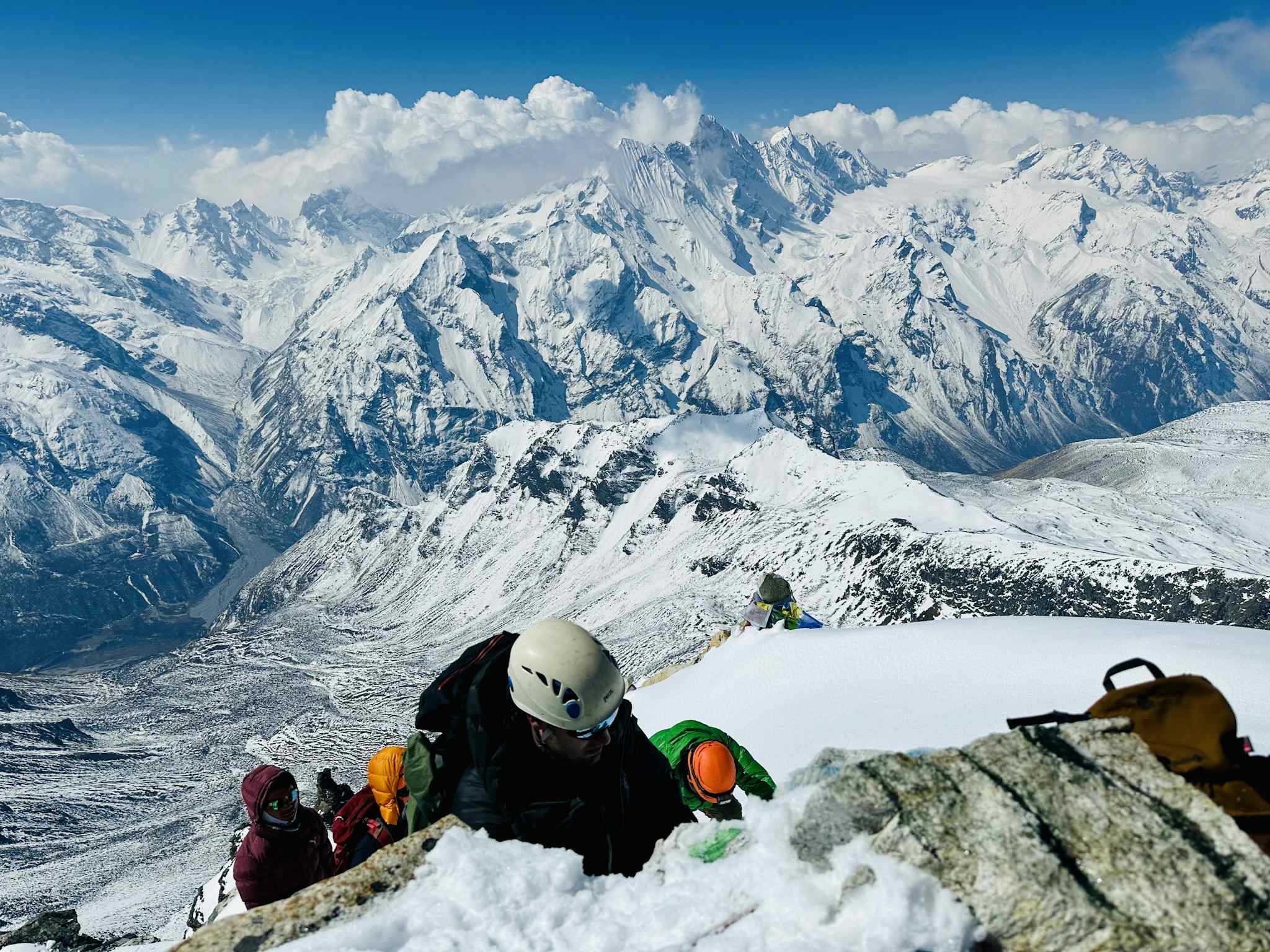
- Best for: A trekking peak in the mighty Himalayas
Nepal is where you’ll find some of the world’s most iconic mountain hikes, such as the Everest Base Camp hike, and the Annapurna Circuit. It’s also where you’ll find some of the world’s highest mountains, the Himalayas. If you’re looking for a mountain in the Himalayas you can trek up, we recommend Yala Peak.

This is one of the few non-technical peaks in Nepal that still has a mighty Himalayan feel. You'll trek through the Langtang Valley, near the border with Tibet, and see all the sights you'd expect in Nepal - hiking past yaks, over suspension bridges clad with prayer flags and staying in teahouses or camping under skies far from the light pollution of the cities.
You'll summit the 5,500m Yala Peak by torchlight, sticking on crampons, clipping into ropes and navigating the ridgeline. This may not be Everest, but it’ll certainly make you feel like a proper mountaineer - and there are big mountain views too, not least of Mt Shishapangma (8,027m) and Gangchempo (6,387m).
2. Mera Peak (6,476m), Nepal
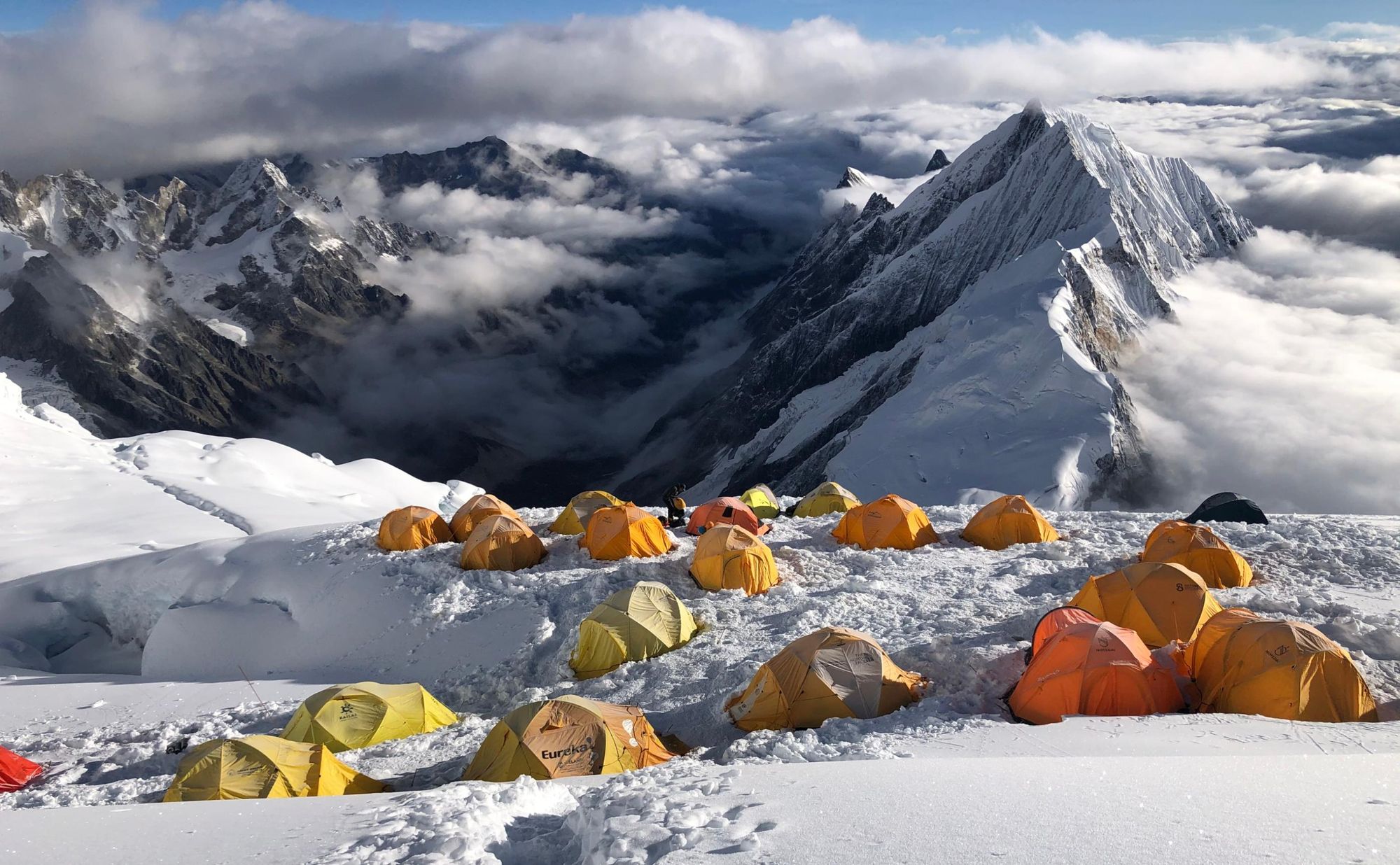
• Best for: Climbing the highest trekkable mountain in Nepal
Mera Peak is Nepal’s highest trekkable mountain, towering at 6,476m high, and was chosen for this list by climbing guide Janbu Sherpa. To reach it you’ll trek from Lukla through rhododendron forests and up high passes strewn with prayer flags, heading up above the treeline into rocky valleys and icy glaciers. You’ll sleep in traditional Nepali teahouses where you’ll get a taste of Sherpa culture, before hitting Mera Base Camp (5,340m). It’s a long slog to the summit, but you’ll be rewarded with panoramic views of the Himalayas.
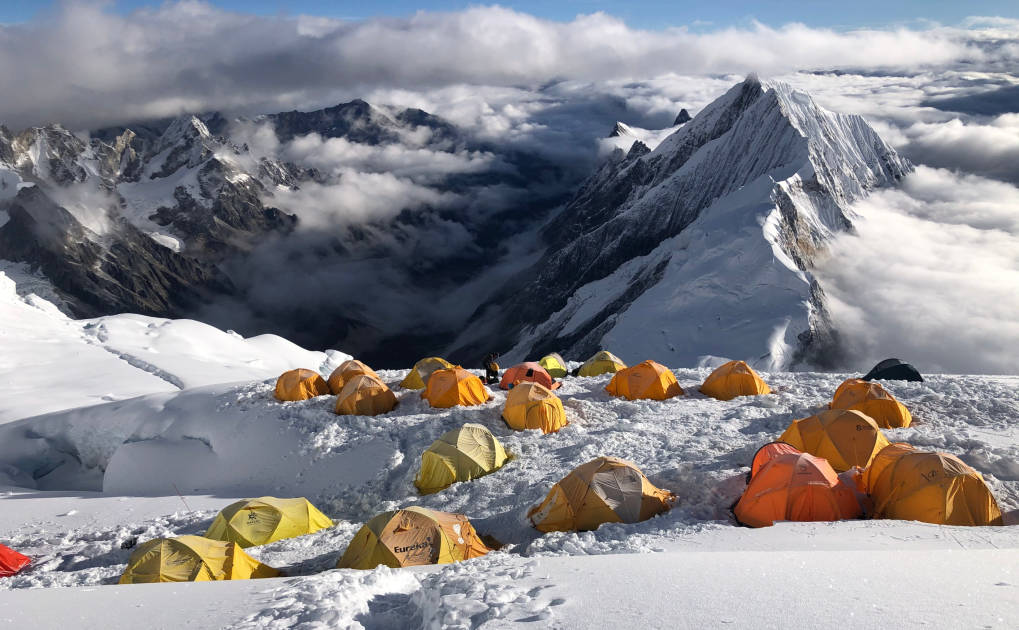
“When you get to the summit you can see a lot of 8,000 metre high mountains like Everest, Lhotse and Cho Oyu. The view is amazing, something you can’t put into words,” says Janbu.
Read more: A Guide to Climbing Mera Peak, Nepal’s Highest Trekking Summit
3. Mount Kazbek (5,054m), Georgia
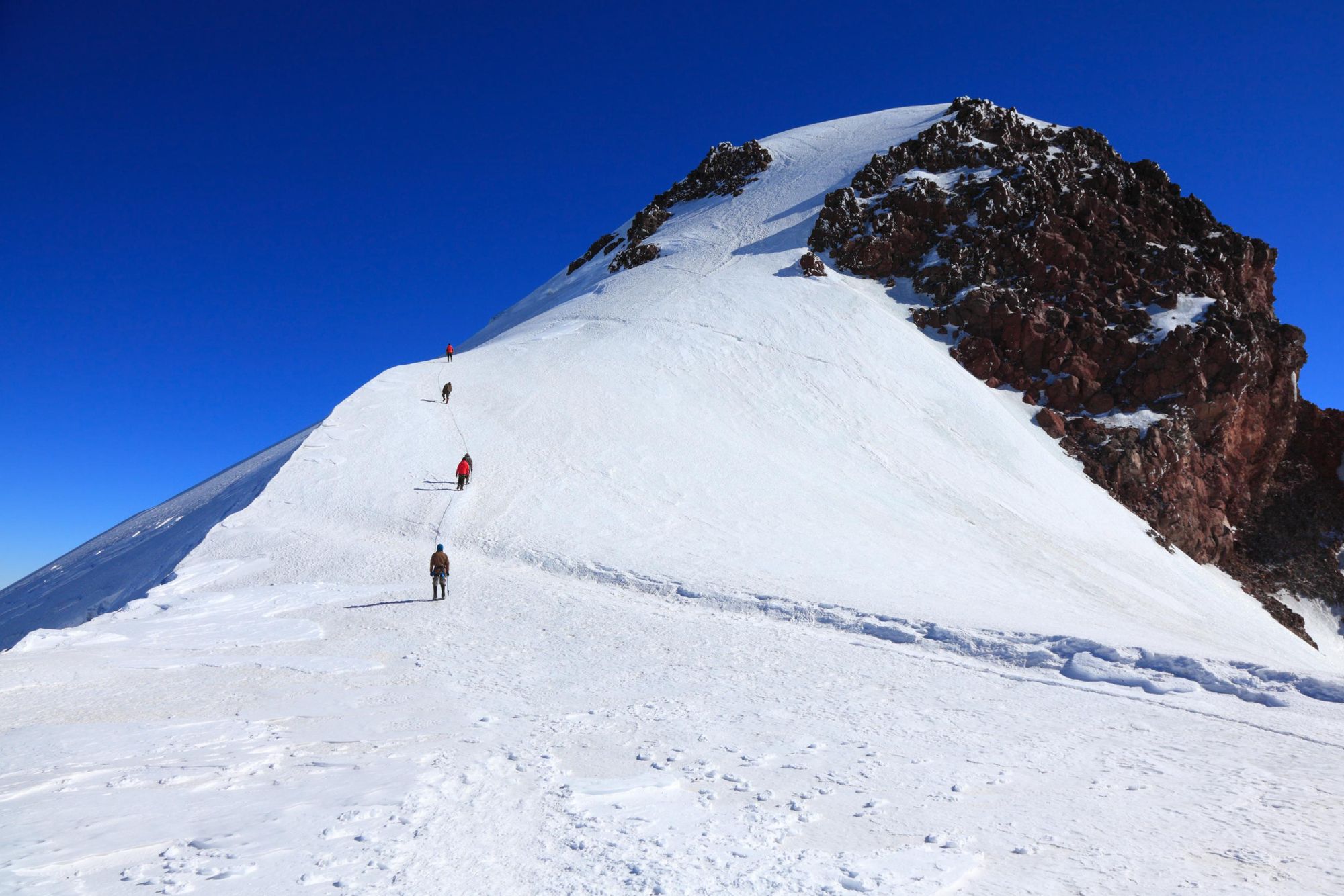
- Best for: Climbing your first 5,000m peak
Mount Kazbek, straddling the border between southern Russia and north Georgia, sits at the intersection of Asia and Eastern Europe. Tour manager and mountaineer David Chichinadze has selected Kazbek as a good beginner mountain to climb if you want to develop alpine skills at high altitudes; you’ll pass through alpine meadows and head above the treeline into a landscape of rugged peaks and glaciers. Summit day is a challenging ascent up rocky slopes, but the panoramic view across Georgia’s Caucasus Mountains makes it all worthwhile.
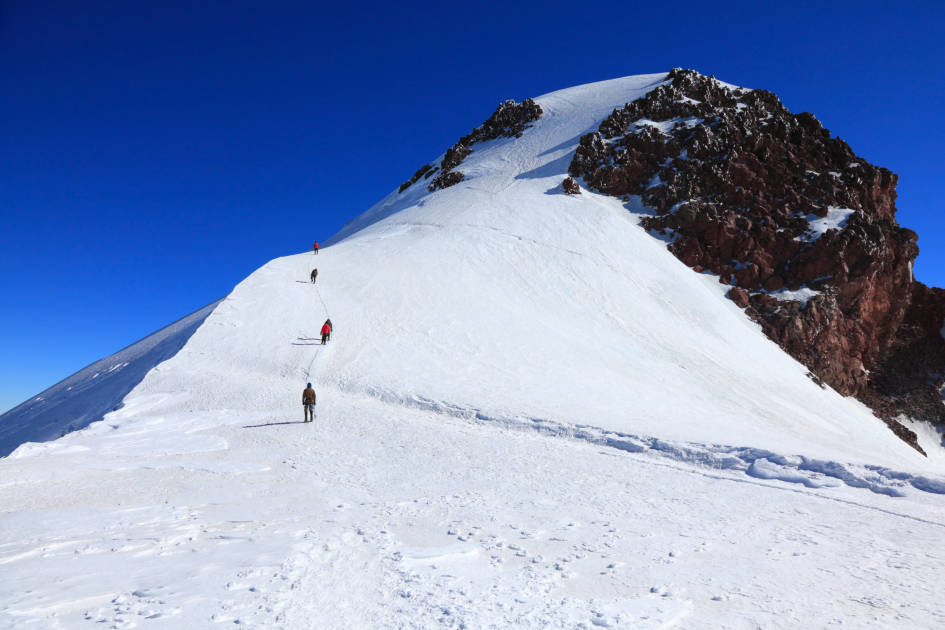
“This is the only mountain in or near Europe where you can go up to 5,000 metres without having technical climbing skills,” David says. “That’s not to downgrade the hazards you encounter there. Kazbek is still a very high mountain - you have to be fit and confident on your crampons. But climbing it is possible, which is what makes it attractive for a lot of people.”
Read more: The Guide to Climbing Mount Kazbek
4. Umm Ad Dami (1,800m), Jordan
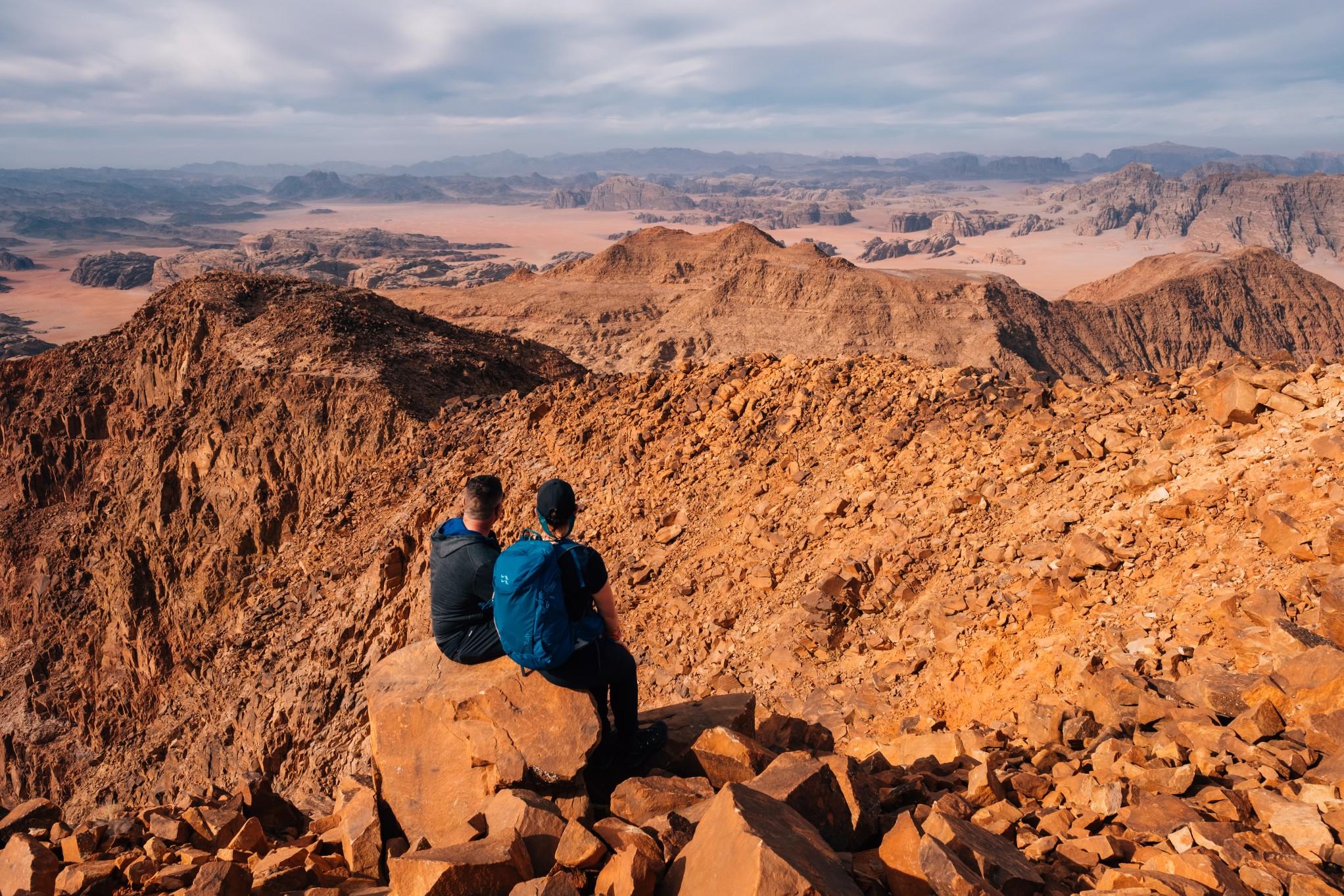
- Best for: Desert views
Umm Ad Dami is the highest mountain in Jordan, and is located in the heart of the lunar-like desert of Wadi Rum, around an hour’s drive from Wadi Rum village. Climbing it takes around three hours for a round trip.
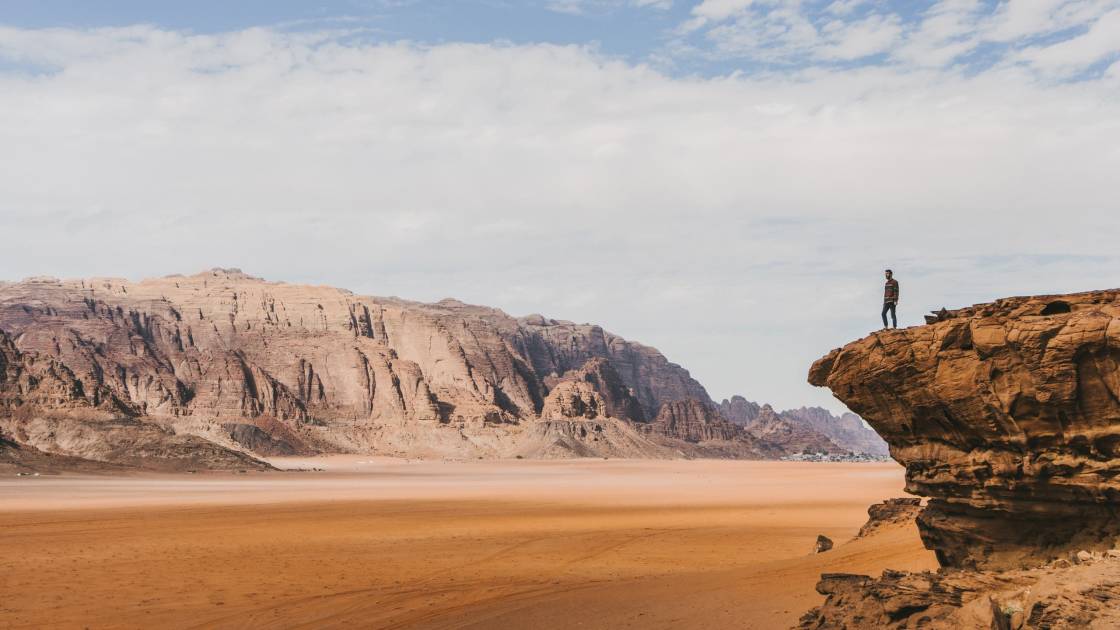
You'll begin in a sandy valley at the base of the mountain, then hike up a rocky trail to the summit. At the top you’ll be able to see the valleys and mountains of Wadi Rum, and even the Red Sea shimmering in the distance on a clear day. Once you’ve descended, we recommend spending the night in Bedouin camp, where you can eat traditional food cooked on hot coals and enjoy stargazing before bed.
Read more: A Guide to Wadi Rum, Jordan’s Otherworldly Desert
5. Mount Rinjani (3,726m), Lombok
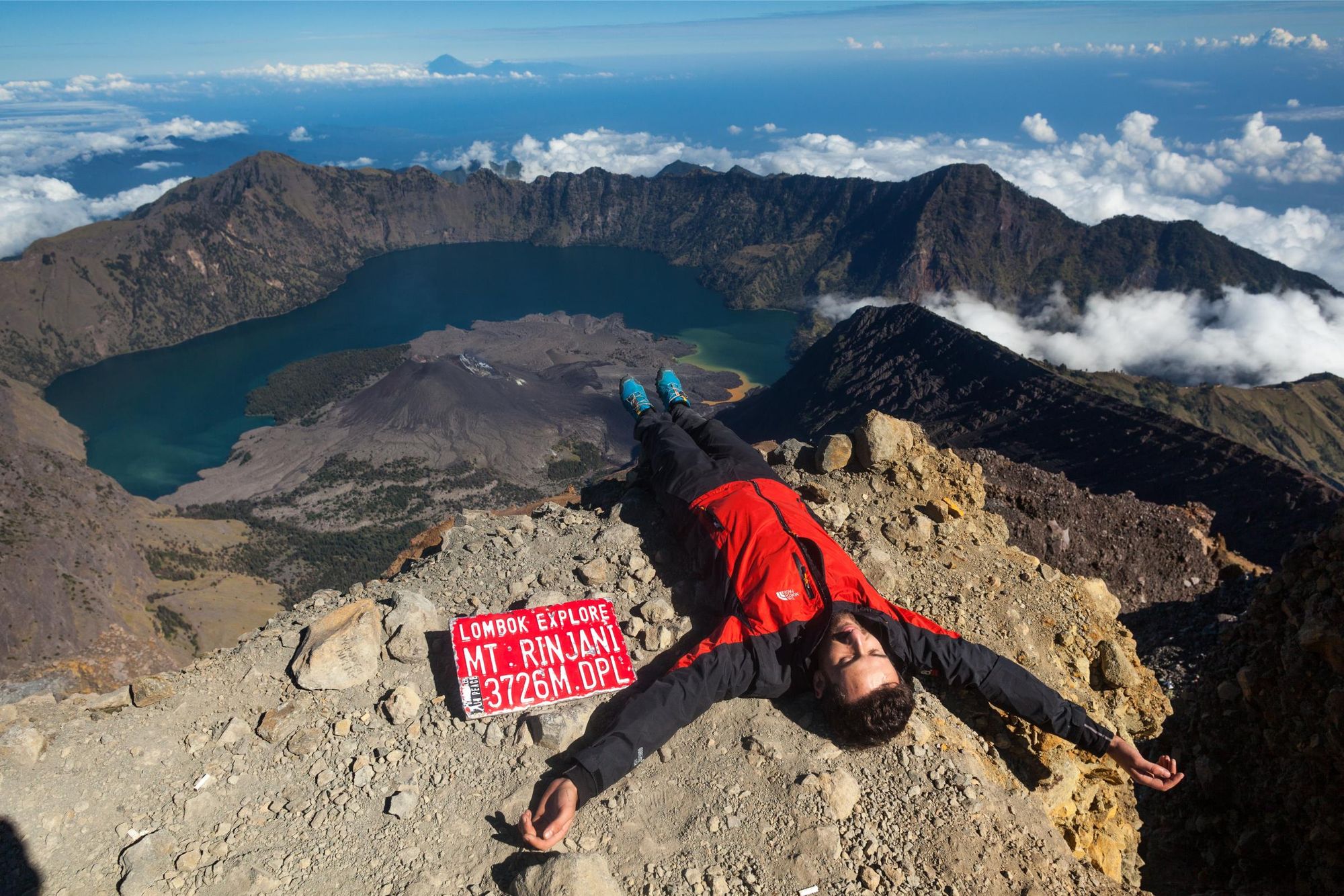
- Best for: Volcano climbing
Mount Rinjani is located on the Indonesian island of Lombok, a 3,726m-high volcano that will push you to your limits - it’s considered one of the best mountains to climb in Southeast Asia. From the top you can see the surrounding volcanoes wreathed in clouds, and look down at Segara Anak, a brilliant blue lake inside the crater rim. It’s one of the few accessible volcanoes to climb in Indonesia - many are too active or the terrain too difficult - but the challenge should not be underestimated.
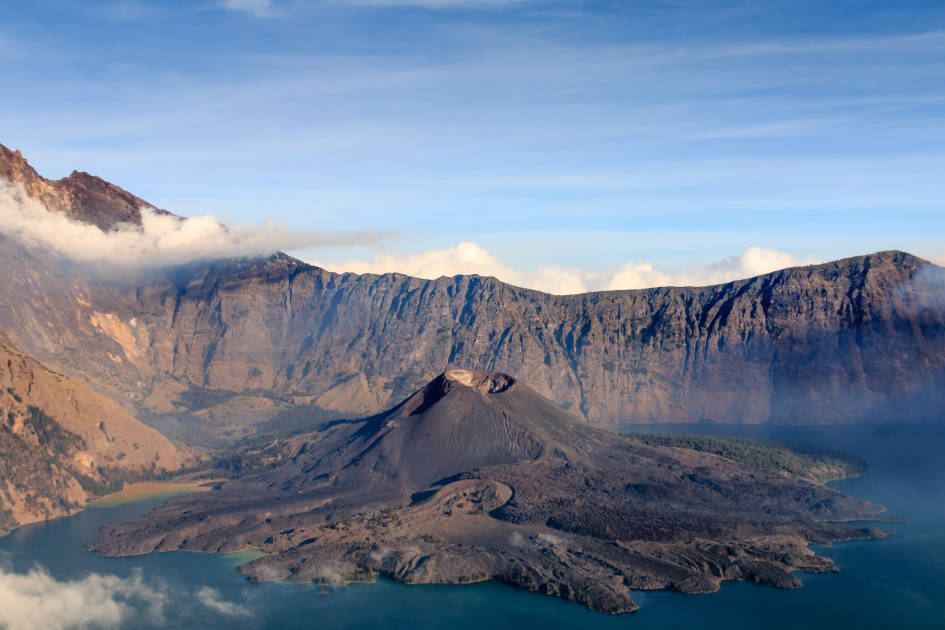
“It's really different from the other volcanoes I’ve been to, because it’s quite high,” explains Yangyang Li, who works for an Indonesian adventure tourism company. “You start with the savannah, the dry short grasses. Then you go up onto the slope of the volcano - the terrain is rocks, ashes and sand. You can climb three steps and then you’ll slide two steps down. It's like walking in the desert. But you can enjoy a very beautiful view on the top of the summit, of course - you can see the sunrise and sometimes you can even see Agung, on Bali.”
Read more: A Guide to Climbing Mount Rinjani
6. Mount Agung (3,031m), Bali
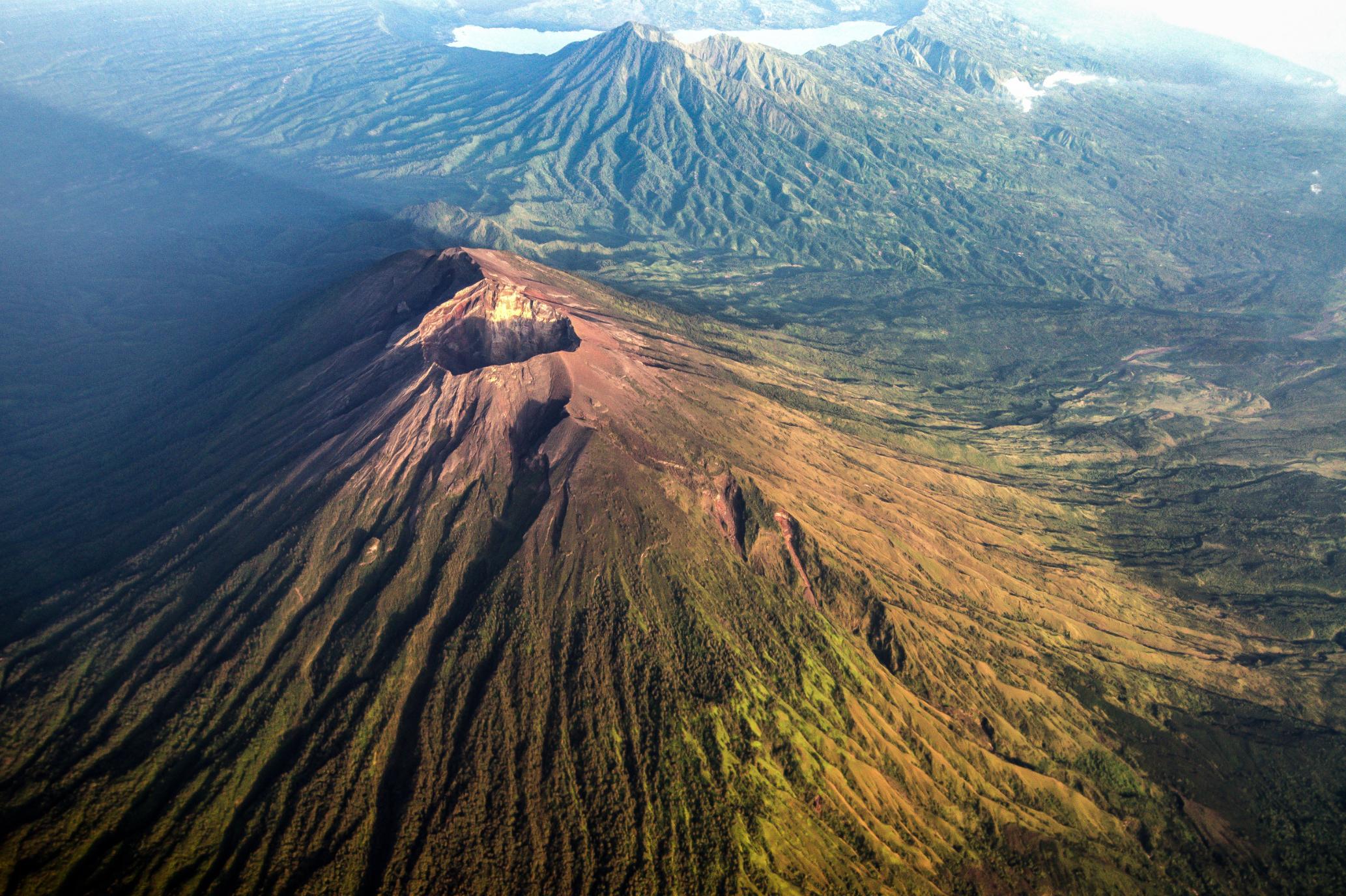
- Best for: Climbing the highest point in Bali
Mount Agung is the highest point in Bali, a 3,031m-high volcano that dominates the surrounding landscape of lava rocks and paddy fields. It is considered a sacred mountain, the home of the Gods, by Balinese people, and can sometimes be closed for religious ceremonies.

To climb Mount Agung we recommend starting super early (or late, depending on how you look at it), at one in the morning. You’ll start your hike on the flanks of Mount Agung at the Pasar Agung Temple (1,490m), one of Bali’s oldest and largest temples. You’ll take a trail through the forest, the terrain becoming rockier as you gain elevation. To reach the summit you’ll travel through a lunar-like landscape, with a final steep ascent over loose scree, arriving in time to watch the sunrise. There is also a longer, more challenging route via the Besakih Temple, which requires scrambling to the summit.
7. UT Kangri (6,070m), India
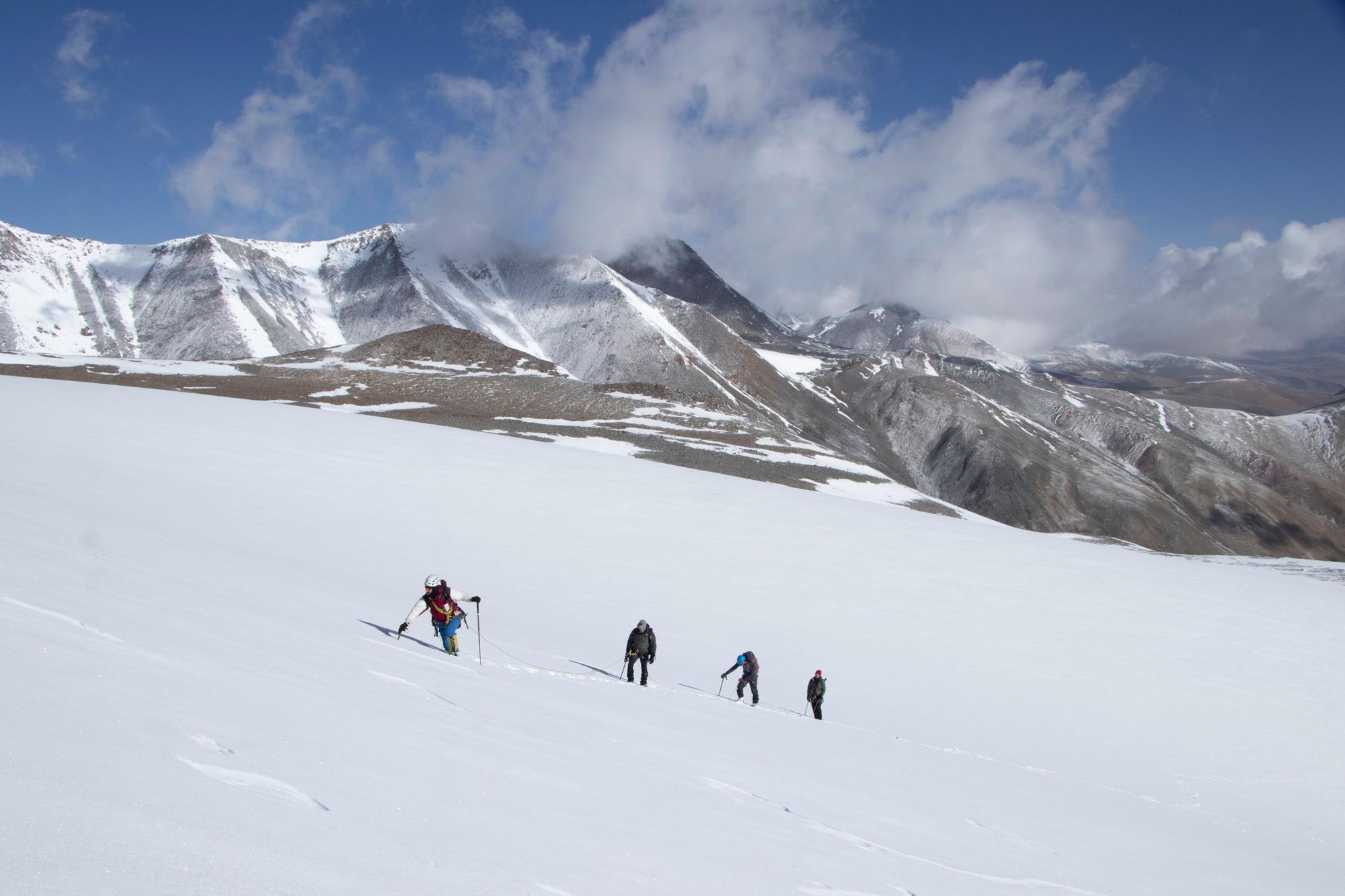
- Best for: Your first 6,000er
UT Ladakh Kangri (6,070m) is the highest mountain in the Rumste Phu Range of the Zankar Mountains in the state of Ladakh. It makes this list as it’s been billed as an alternative to Stok Kangri, a mountain recently closed to climbers due to its receding glaciers.
To climb UT Kangri you’ll begin in the small village of Rumtse, where you’ll spend several days acclimatising and practising basic mountaineering techniques, such as roping up, tying knots and walking with crampons. You’ll then establish a summit camp before striking out towards the top. It’s a gruelling hike to the summit, negotiating deep snow amid high winds, with sections involving a roped climb - all made more difficult by the high altitude. At the top, you’ll be able to reflect on your achievement while enjoying views of the surrounding mountains, including the dual summited Kang Yatse (6,400m).
8. Meesapulimala (2,640m), India
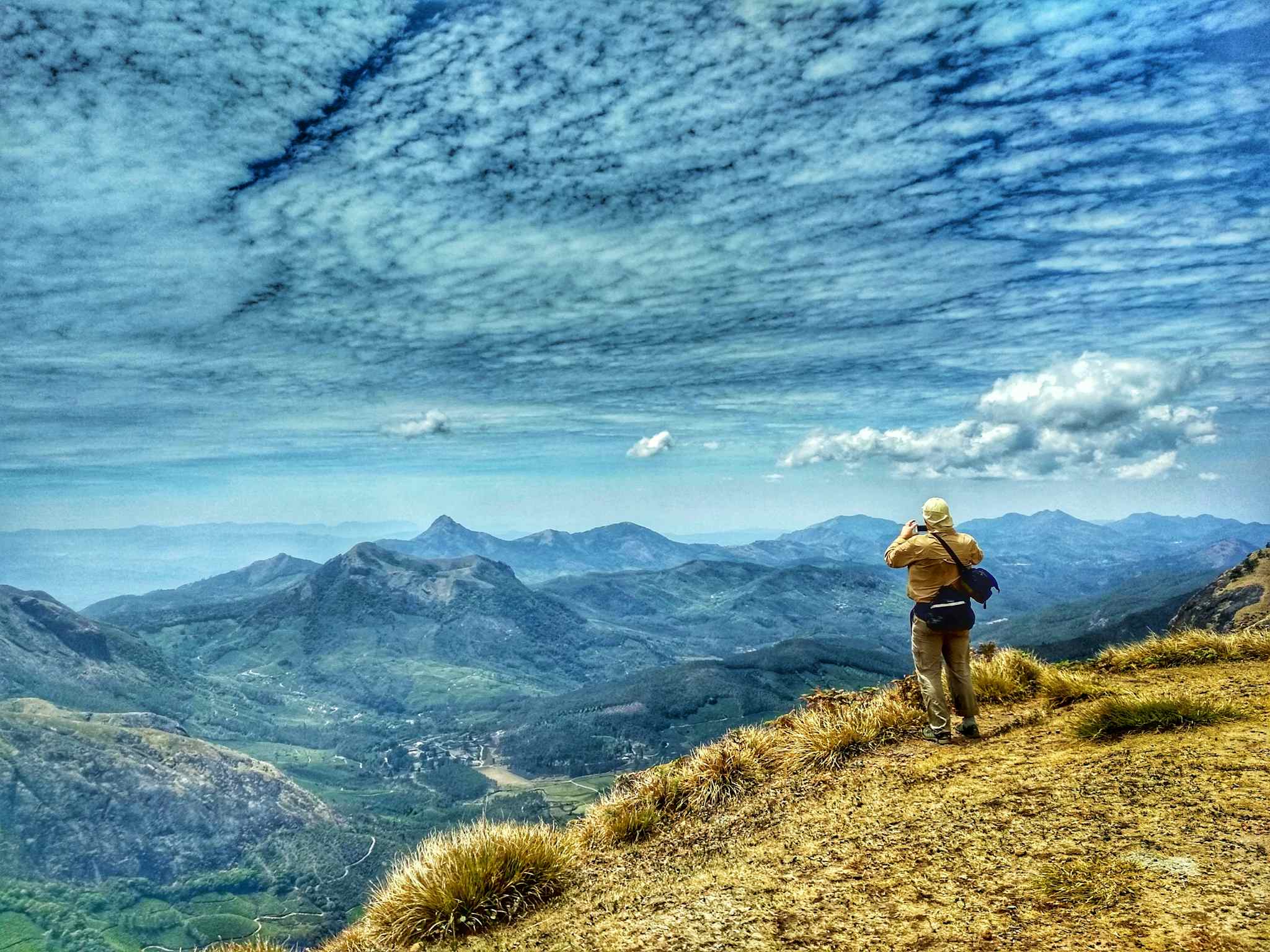
- Best for: Exploring the biodiverse Western Ghats
The north of India is known for being mountainous, with several of the Himalayan eight thousanders, such as Kangchenjunga, straddling the Nepal-India border. But the south of the country is mountainous too - the Western Ghats trace the western coast from Gujarat to Kerala. They might not be as high as the Himalayas, but they’re an older range and a UNESCO designated biodiversity hotspot.
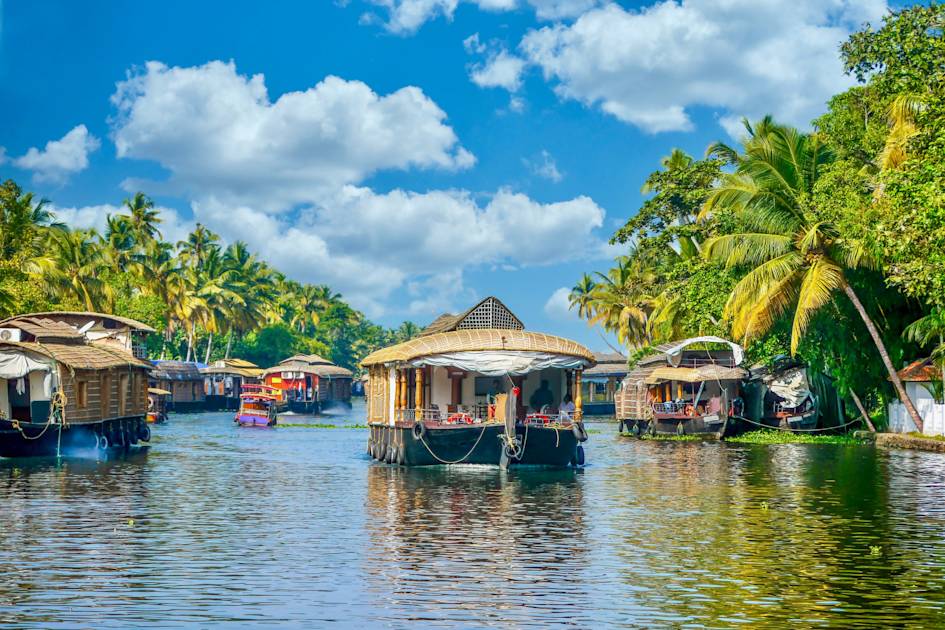
We recommend climbing the Western Ghats peak of Meesapulimala, in Kerala. From the trailhead at 1,500m you’ll hike past tea plantations and rhododendron forests, climbing over grassy hills until you reach the trail to the summit. There are sweeping views over the mountains and cloud forest of the Western Ghats from the top.
9. Mount Yarigatake (3,180m), Japan
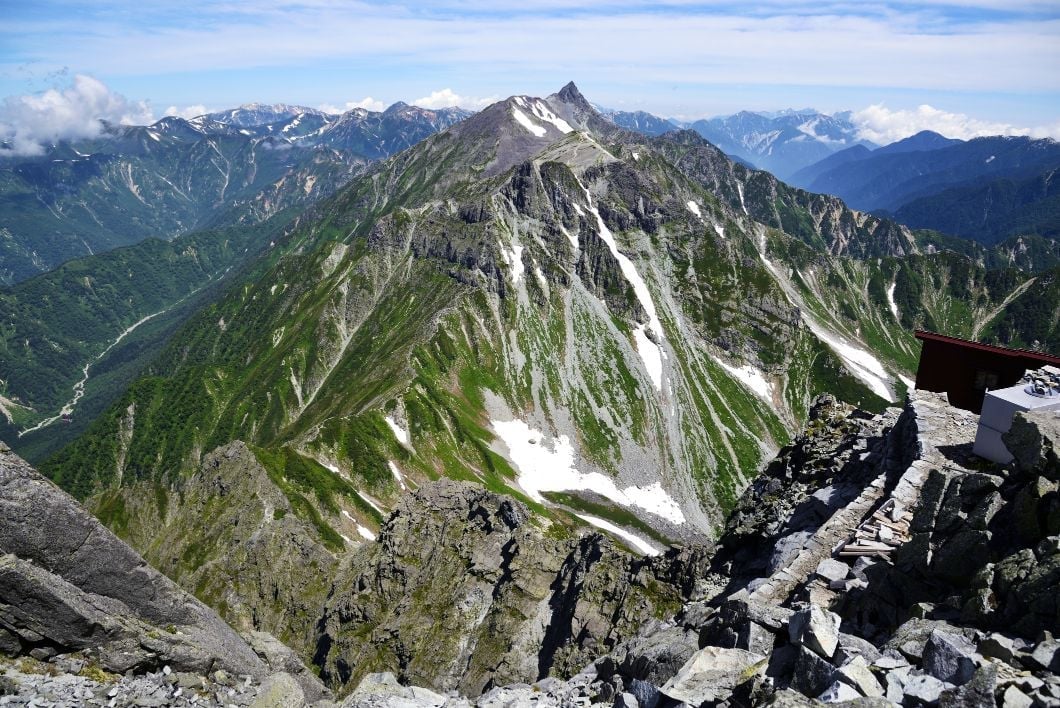
- Best for: Exploring the Japanese Alps
The Hida, Kiso and Akaishi Mountains are known collectively as the Japanese Alps - a mountain range that stretches across Honshu, the largest Japanese island (and home to major cities including Tokyo). The alpine title translates into the scenery, where steep, grey, rugged mountain walls rise to rolling ridgelines and dramatic, spiky peaks. One such peak is Mount Yarigatake - named for its spear-like summit - a favourite of tour guide Akiko Suzuki.
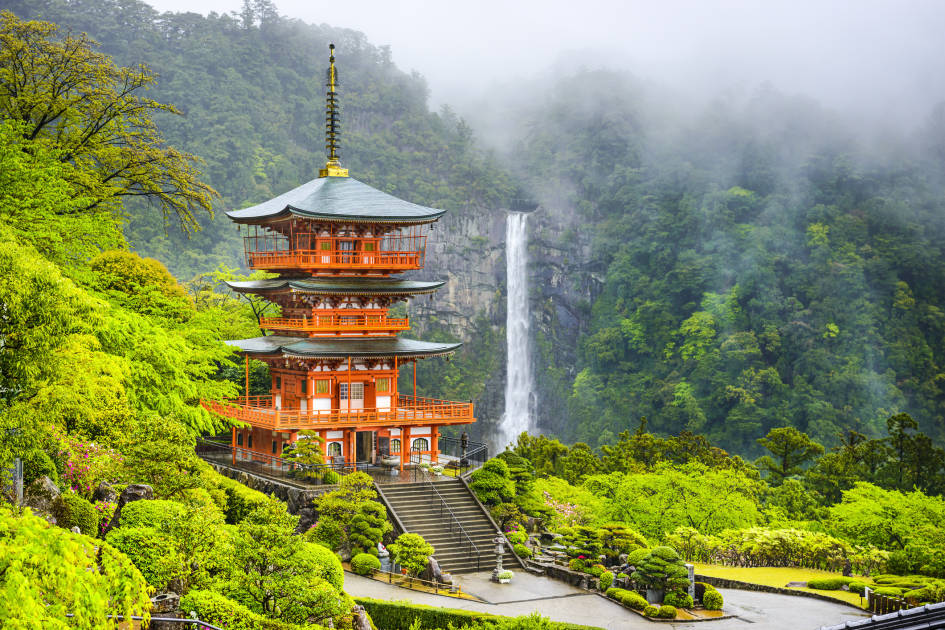
Hike through beautiful, green forests and past vibrant rivers and you’ll eventually make it to the juxtaposing, rugged peak of Yarigatake - and be able to look out over the 15 other mountains that make up the Japanese Alps. The big treat comes next though - crossing the famous Daikiretto Gap, a trail with steep drops which will lead you over to the summit of Okuhotaka. This is not only the third highest mountain in Japan, it’s one of the best hikes in Japan, finishing with a climb up some iron ladders to reach the summit of the Japanese Alps.
Read more: How Japanese Omotenashi Manifests Itself in the Mountains
10. The Jukku Pass (3,640m), Kyrgyzstan

- Best for: Exploring the lesser known Tian Shan mountains
The Tian Shan mountains are enormous, untarnished and largely still unexplored by the world of outdoor tourism. At their peak there is a cluster, on the boundaries of China, Kyrgyzstan and Kazakhstan, where they reach up to 7,439m. On this hike you’ll stay a lot lower than that - technically you’ll be climbing to the top of a pass, rather than a summit - but you'll still get the same feeling of immensity that, in honesty, is hard to get away from in Kyrgyzstan.

Stay in yurts and cross the beautiful “jailoo”, the summer pasturelands home to wild horses, far-reaching green fields, and Tian Shan pine forests that line the foothills of the snowy mountains beyond. You'll follow in the footsteps of explorers who used these paths in the 1930s en route to Chinese Turkestan, pass hot springs, wild camp amongst it all and eventually reach the Jukku Valley. From here, it’s a demanding climb up to the Jukku Pass - you’ll pass mountain lakes and rugged mountains on your way to the top.
Inspired? Check out our mountain climbing adventures and treks in Asia.



